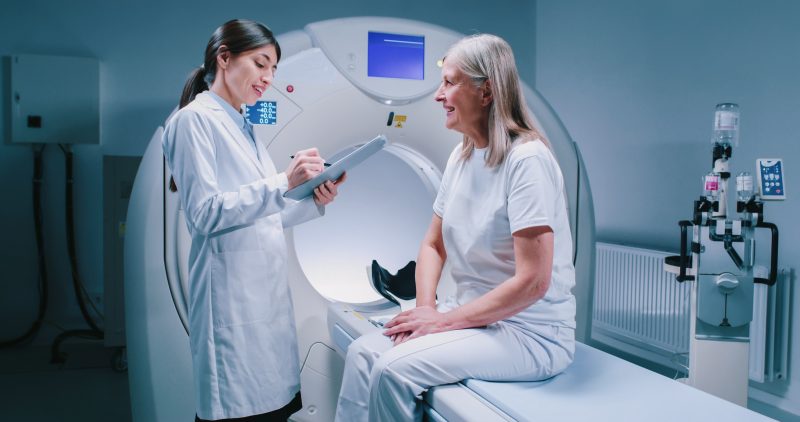PUBLISHED: 21st May 2024

by Claire C. Conley, Ph.D.
Early detection of breast cancer through regular screening is important for effective treatment and improved outcomes. Women at high risk for breast cancer have additional options for breast cancer screening. Specifically, annual screening breast MRI is recommended in addition to mammography for high-risk women. However, the number of high-risk women who have breast MRI is disappointingly low. In our recent study, we wanted to understand the factors influencing the uptake of screening breast MRI in this population, shedding light on crucial avenues for intervention and improvement.
What we did
Between August 2020 to January 2021, we recruited a diverse sample of 232 high-risk women ages 25 to 85. High-risk criteria included a range of factors, such as genetic variants, previous history of lobular carcinoma in situ or exposure to chest radiation. Participants completed a survey about their health and their experiences with breast cancer screenings.
What we found
What we found was concerning: Only about half of the women said their doctor had recommended a breast MRI screening, and even fewer had actually gotten one. This means there is a big gap between what doctors recommend and what actually happens for these high-risk women. But we also uncovered something else: Two things seem to make a big difference in whether a woman gets the screening she needs.
First, knowing more about breast cancer and how screenings work seemed to make women more likely to get an MRI. This shows how important it is for people to understand their health and the care options available to them.
Second, having supportive friends and family members who encourage screenings can also make a big difference. Not only can people in your social networks remind you when it’s time to be screened, but they can also help you overcome tangible barriers to getting screened, like transportation and childcare.
It’s important to remember that this study only looked at a small group of women during a specific time (the COVID-19 pandemic), so we can’t say for sure that these findings apply to everyone. More research with larger groups of women from different backgrounds will help us understand this issue better.
Next steps
These findings are important because they show us where we might be able to make changes to help more high-risk women get the screenings they need. With continued research and community support, we can work towards closing the gap and improving outcomes for individuals at high risk for breast cancer. By teaching people more about breast cancer and building supportive communities, we can empower women, making it easier for them to take control of their health and get the screenings that could save their lives.
Claire Conley, PhD, is a clinical psychologist and an Assistant Professor of Oncology at the Georgetown University Lombardi Comprehensive Cancer Center.